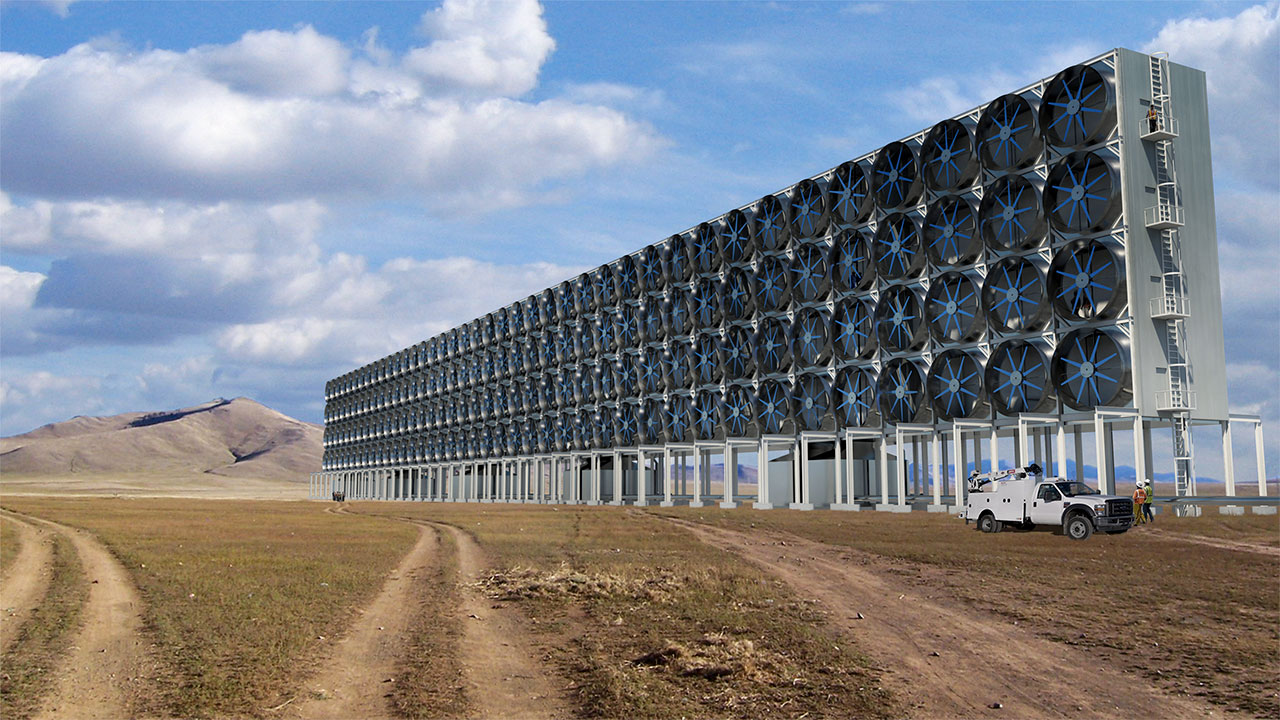Greenhouse gas emissions have to be sharply and rapidly cut, but some emissions are easier to cut than others, and some are going to persist for a long time. These are the basic facts behind the “net” of “net zero” – the mantra that has come to define the green energy transition. Electric cars are here, and electric rail and trucks are coming along, but electric airplanes and electric shipping aren’t happening anytime soon. Electrified steel mini-mills that use recycled material are a reality; electrified cement and petrochemical plants, definitely not. And given the need to feed the still-increasing human population, it’s almost impossible to imagine how potent methane and nitrous oxide emissions from agriculture can be much reduced within the few decades we have to kick the fossil fuel habit.
The “net” of “net zero” implies that we can make up for the global warming from persistent emissions by deliberately removing carbon dioxide from the atmosphere. Broadly speaking, this can be accomplished either by enhancing the natural ability of vegetation to sequester the carbon, or by artificially capturing and sequestering atmospheric carbon into the mineral parts of the Earth. The former approach, natural land management, is by far the more popular and less controversial of the two, and includes many practical methods and policies with the common goal of enhancing carbon incorporation into forests, farms, grasslands and wetlands. National and local land conservation programs, “no-till” methods for crop harvesting, and winter cover crops that prevent soil erosion are just a few of these. The efforts are helpful, but a comprehensive 2018 study led by the Nature Conservancy showed that, in the US, the potential carbon sequestration from either reforestation or management of existing forests dwarfs most options in the other biomes. Globally, about 60% of the total carbon in soils and vegetation is held in tropical, temperate and boreal forests, making them the central players in any natural land management approach to climate change mitigation.
The broad popular interest in forest carbon sequestration has spurred a great deal of work to determine how large a contribution it might really be able to make. Most recently, research teams in Switzerland and Germany published a detailed study in the prestigious journal Science, taking a new approach to look at how much climate mitigation can come from existing forests worldwide. The team estimated an upper carbon limit by modeling what would happen if all direct forest management, including all harvesting for wood and fiber products, were to stop. Even under this unrealistic scenario, however, the world’s forest carbon store increased by just 15%, with the added amount only enough to offset about four years’ worth of current human emissions. The authors emphasize that this is not nearly enough to substitute for the necessary efforts to replace fossil fuels with renewables – though it might compensate for hard-to-abate emissions if the world executes a rapid transition with warming held below 2°C.
This recent study is, unfortunately, just the latest in a series of high profile papers that have highlighted the limits of natural land management for mitigating climate change. Reforestation of previously forested land and afforestation of new land had been thought to have strong potential, but a consensus is developing that their capacities for carbon sequestration are low because of competing demands for land use. These approaches are also limited because, while new forests add carbon quickly when they are young, their ability to incorporate more dwindles and eventually saturates as they age. Climate change itself, of course, deters forest carbon storage because it causes increased incidence of wildfires, reduced soil moisture, lower soil nutrient levels, and more susceptibility to insect attacks. We should also recognize that the effectiveness of any natural land management approach is ultimately limited because some of the carbon dioxide we emit today persists in the atmosphere for thousands to tens of thousands of years, much longer than it is retained in any part of the biosphere. When forests die, much of their carbon is simply recycled into the atmosphere, and is not permanently removed.
The limits to natural land management make plain the problem of legacy carbon dioxide emissions, an issue unaddressed in the detailed roadmaps for the green energy transition. The roadmaps show us how to get to “net zero” emissions fast enough to keep warming under 2°C, but say little about what happens next. In a best case scenario, the carbon dioxide level might increase from the current 420 parts per million to plateau at 470 or 480 ppm, but the very slow natural removal processes mean that Earth would then remain in an overheated state for millennia to come. There is really not much choice: if we care about bequeathing a healthy climate to future generations, we are going to have to clean up our mess by vacuuming the atmosphere and safely sequestering the carbon underground – where it will mineralize and stay put over geologic time. But this ethical obligation poses a host of technical and political problems.
As with natural land management, there is no shortage of proposed approaches to large scale atmospheric drawdown, but most of them are at an early research stage and will likely never get off the ground. The National Academy of Sciences recently delivered a lengthy report on the possibilities for sequestering carbon in the oceans, for example, but all the approaches are still speculative and may pose heavy risks of negative ecological impacts. Other methods have been exhaustively reviewed by the World Resources Institute. Enhanced weathering means breaking up and distributing enormous quantities of rock on land, mimicking the long-term natural process but speeding it up by increasing mineral surface area. Nobody has grappled well with the enormous logistical burden associated with making this happen. Bioenergy with carbon capture and storage (BECCS) proponents would like to harvest and deliver enormous quantities of biomass to ethanol manufacturing and electricity power plants, and then capture the carbon dioxide emissions from the smokestacks. This can work, and is being done to a very limited extent already, but recognition is dawning that the logistics of establishing supply chains and the many ecological and social costs will almost certainly make it infeasible at scale. This leaves us with precisely one plausible candidate: direct air capture (DAC) of carbon dioxide followed by injection into the many deep saline aquifers found throughout the continent.
The good news about DAC is that we know how to do it, since the basic chemistry for capturing carbon dioxide is already established from existing carbon capture and storage (CCS) operations, which (in the US) already profitably collect carbon dioxide from smokestacks at natural gas power plants and ethanol, fertilizer and hydrogen manufacturing facilities. The biggest challenge in applying this chemistry to a DAC operation is the enormous energy cost involved in pushing air into the capture columns – a huge amount of air has to be moved because carbon dioxide is hundreds of times more dilute in the atmosphere than in smokestacks. The energy can be provided by electricity from a greening grid, which emphasizes the importance of rapidly commissioning new solar and wind plants. The sequestration side of things also appears to be workable, since many pilot projects have shown the feasibility of safe injection and have established that the injected liquified carbon dioxide (at depths of a kilometer or more) does not leak back out.
There is also some good news on policy support: Congress and President Biden are in alignment that DAC is worthy of significant attention. Last year’s Inflation Reduction Act increases the tax credits for both CCS and DAC, with the largest credit reserved for DAC operations that sequester the carbon underground. The 2021 Bipartisan Infrastructure bill also funds industrial DAC hubs located throughout the country, and new pipelines to move the captured CO2 to sequestration sites. The Department of Energy is set to soon release the DAC hub funds, with no shortage of applications to select from, and the Rhodium group, a leading energy modeling think tank, has just published a new analysis indicating that the IRA tax credits should drive substantial industry growth, both within the US and abroad. Although it is very early days, and the full impact of a worldwide DAC program will only be felt in the later part of the century, the steps taken now are essential because they lay the framework to achieve the economies of scale that will be necessary to ultimately make this all a reality.
Who could object to investing in a new technology with such potential? A lot of people, it turns out, and their arguments bear paying attention to. A few days ago, the New York Times reported on the debate over building new infrastructure law-funded pipelines in Iowa, where they would transport CO2 captured from ethanol plants and deliver it to geologic sequestration sites. The opposition unites progressives and conservatives in a common NIMBY argument driven by the possibility that land for the pipelines could be seized by eminent domain. The same types of concerns, of course, also galvanize local opposition to other crucial parts of the renewable energy economy, especially when the large land footprints associated with wind farms, solar installations and new electricity transmission lines are part of the equation.
Strident opposition also comes from climate groups on the left wing side of the advocacy spectrum. These groups oppose CCS and DAC because they see both technologies as enablers of the fossil fuel economy – and not without reason. There are about a dozen carbon capture projects operating at power plants and manufacturing facilities in the US today, and most of them do not sequester the CO2 but rather sell it to fossil fuel companies, who inject it into depleted oil wells to repressurize them and enable more pumping. This is not exactly a great precedent for a healthy climate technology. And fossil fuel firms are unmistakably giddy with excitement over the new policies. They represent a sizable number of the companies seeking funds for the new DAC hubs, and clearly see the new technology as a way to promote their interest in a healthy climate – while simultaneously advocating for the necessity of continued oil and gas extraction.
Particularly galling to progressives (and many others in the healthy climate movement) is the fact that federal subsidies are now being ladled out to fossil fuel companies for both the extraction and sequestration sides of their soon-to-be two pronged operations. It looks for all the world like the fossil fuel economy is being boosted, not deterred, by these policies. In the face of this, it is easy to overlook the longer-term necessity for atmospheric carbon removal, as well as the climate change mitigation potential of using CCS at manufacturing facilities that cannot easily electrify, and that would otherwise continue to emit the CO2. It is, of course, quite possible to alter the policy framework to promote only the beneficial aspects of CCS and DACS. That is something that all healthy climate advocates should strive for.
______________________________
CTJ Roebroek et al. (18 May 2023). https://www.science.org/doi/10.1126/science.add5878
IPCC Special Report on Land: https://www.ipcc.ch/srccl/
https://www.washingtonpost.com/nation/2023/06/22/biden-carbon-capture-climate-environmentalists/
https://www.ncbi.nlm.nih.gov/pmc/articles/PMC6235523/
https://www.grida.no/resources/7554#
https://www.wri.org/initiatives/carbon-capture-and-storage-ccs

